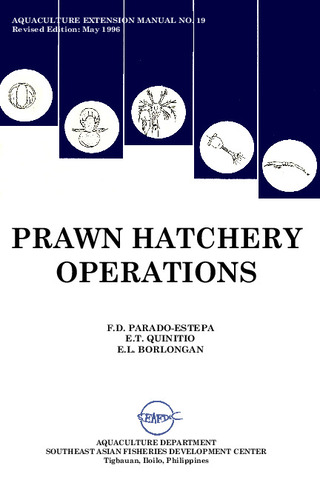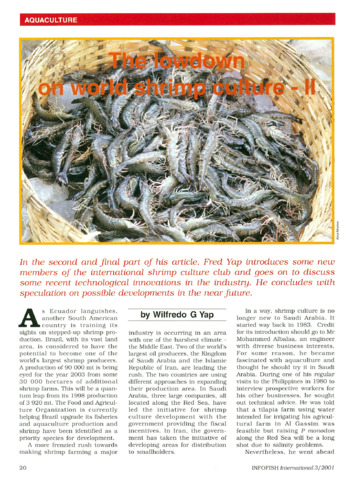Use of seaweed meals from Kappaphycus alvarezii and Gracilaria heteroclada as binders in diets for juvenile shrimp Penaeus monodon
Share
Abstract
Two seaweed meals were tested as binders in shrimp diets. In the first study, Kappaphycus alvarezii or Gracilaria heteroclada in dry ground form were added to an isonitrogenous diet at 3, 5, 7 or 10%. The basal diet had 5% corn starch and 5% wheat flour as binders and served as the control diet. A second study used the seaweed meals at 5, 10 or 15% plus 5% wheat flour and a control diet containing 15% wheat flour (no seaweed meal). These two sets of diets were fed to juvenile tiger shrimp, Penaeus monodon, to assess the acceptability of the seaweed meals in terms of shrimp growth and survival. In both studies, diets with 10% G. heteroclada had the highest water stability after 4 h but differences among diets were minimal. In study 1, shrimp fed diets with 3% and 5% K. alvarezii and 10% G. heteroclada had the highest total biomass and those fed the diet containing 5% K. alvarezii the highest specific growth rate (SGR). Shrimp survival was highest with those fed 3% K. alvarezii and decreased as K. alvarezii was increased. Survival was not affected by the level of G. heteroclada in the diet. Diets with 3% and 5% K. alvarezii had the best feed conversion ratio (FCR). With a modified binder composition in study 2, total biomass and SGR of shrimp fed 10% G. heteroclada did not significantly differ from the control, nor from 10% K. alvarezii and 5% G. heteroclada. Diets with 5% and 10% K. alvarezii or G. heteroclada had the best FCR. Survival was highest among shrimp fed 5% G. heteroclada but was not significantly different from those of the control, 10% G. heteroclada and 10% K. alvarezii groups. Thus, as a supplement for wheat flour, up to 5% K. alvarezii or 10% G. heteroclada meal could be used with no adverse effect on growth. The use of seaweed meals as binder in commercial shrimp diets would minimize organic waste from the feed and would mean an additional market for seaweeds.
Suggested Citation
Dy Peñaflorida, V., & Golez, N. V. (1996). Use of seaweed meals from Kappaphycus alvarezii and Gracilaria heteroclada as binders in diets for juvenile shrimp Penaeus monodon. Aquaculture , 143(3-4), 393-401. https://doi.org/10.1016/0044-8486(96)01282-3
Subject
Taxonomic term
Collections
- AQD Journal Articles [1249]
Related items
Showing items related by title, author, creator and subject.
-
An overview of the nutrition, feed and feeding techniques of prawn penaeid/shrimps
Piedad-Pascual, Felicitas (Philippine Council for Aquatic and Marine Research and Development, 1989)This paper echoes what transpired during the first International Conference of Penaeid Prawns/Shrimps held in Iloilo City in December 4-7, 1984, particularly on the Nutrition nd Feed Development. Around 25 papers were ... -
Prawn hatchery operations
Parado-Estepa, Fe D.; Quinitio, Emilia T.; Borlongan, Emeterio L. (Aquaculture Department, Southeast Asian Fisheries Development Center, 1996-05)The manual, an updated version of the 1984 SEAFDEC/AQD manual, presents the underlying principles and step-by-step instructions of prawn larval and post-larval rearing. The techniques described are not only applicable to ... -
The lowdown on world shrimp culture - II
Yap, Wilfredo G. (INFOFISH, 2001)This paper introduces some new members of the international shrimp culture club and goes on to discuss some recent technological innovations in the industry, particularly the polyculture of tilapia (mainly Oreochromis ...




